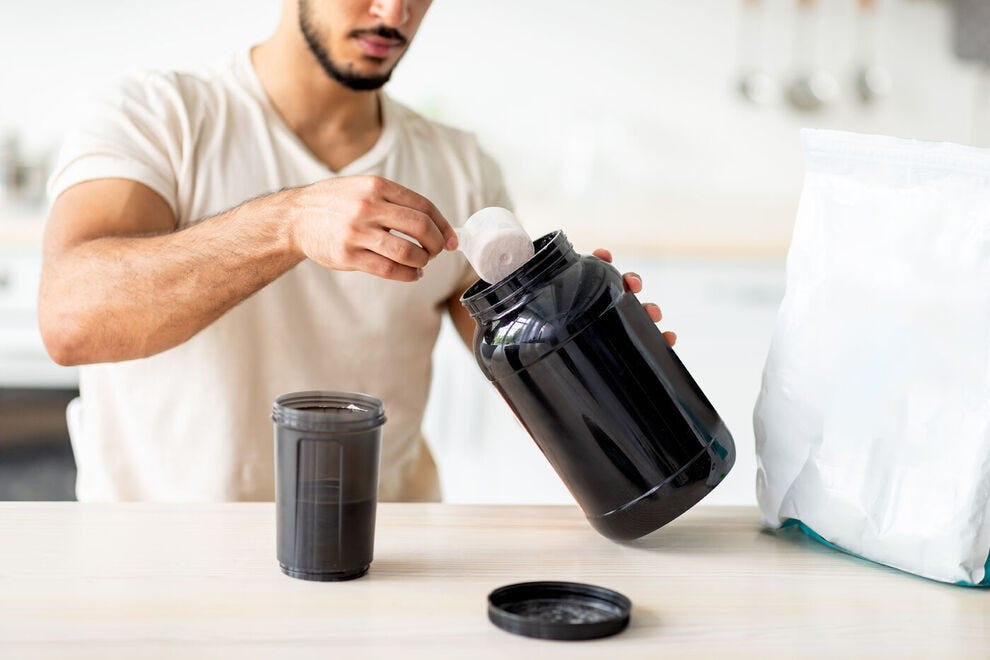If maintaining your fitness routine while traveling is a priority, understanding the Transportation Security Administration (TSA) regulations regarding protein powder is crucial. Navigating airport security with supplements can be tricky, so let’s address the key questions: Can you bring protein powder on a plane? What are the rules for carrying it in your carry-on or checked baggage? Do you need to label it properly? This guide provides everything you need to know for a smooth travel experience.
Protein Powder vs. Liquids: Understanding the TSA Guidelines
The primary thing to remember is that once you mix protein powder with liquid, it becomes a beverage. This then falls under the TSA’s restrictions on liquids, both in carry-on and checked luggage. For checked baggage, liquids cannot exceed 70 ounces (2 kg) or 68 fluid ounces (2 L) per person. Also, the container’s capacity must not exceed 18 ounces (0.5 kg) or 17 fluid ounces (500 ml).
Therefore, if you plan to enjoy a protein shake, do so before going through airport security. Protein shakes and meal replacement beverages should be consumed beforehand to avoid any issues.
Packing Protein Powder in Your Carry-On: What You Need to Know
For carry-on luggage, the rules are specific. If your protein powder is in its original container and is less than 12 ounces (350ml), you can usually bring it without any issues. However, the TSA mandates that any powder or supplement containers larger than 12 ounces must be placed in a separate bin for screening at airport security.
To simplify the process, consider these options:
- Individual Serving Packets: Many brands offer single-serving packets of protein powder. These are incredibly convenient for travel, even if they cost a bit more.
- DIY Individual Servings: You can also measure out individual servings and pack them in clear, resealable bags. Label each bag clearly with the contents. Only pack the number of servings you anticipate needing during your trip. The goal is to help security personnel easily identify the contents.
 Individual protein powder packets for travel
Individual protein powder packets for travel
Protein Bars as an Alternative
If you’re concerned about the hassle, protein bars offer a convenient alternative. The TSA has no restrictions on protein bars, and they don’t take up much space in your luggage. You might even consider purchasing them at your destination to save space and avoid potential delays at security.
Packing Protein Powder in Your Checked Baggage
If you must bring a large quantity of protein powder, it’s generally best to pack it in your checked baggage. This eliminates the need to explain it at security or risk having a TSA official ask you to leave it behind.
Key Considerations and TSA Discretion
Remember that the final decision rests with the TSA officer at the security checkpoint. They have the authority to decide whether your protein powder can pass through, so being mindful of the rules is essential. Whenever possible, keep the protein powder in its original packaging for easy identification. If you’re unsure, pack only what you need for the flight in your carry-on and place the rest in your checked bag.
 TSA Regulations on Vitamins and Medicine
TSA Regulations on Vitamins and Medicine
International Travel Considerations
These guidelines mainly apply to domestic and international flights departing from the United States. If you’re flying from another country, be aware that their rules regarding the amount of protein powder you can carry on the plane will apply. Always check the specific regulations of the country you are departing from.
Traveling Smart with Protein Powder
In summary, traveling with protein powder requires careful planning and adherence to TSA guidelines. By understanding the rules and packing accordingly, you can maintain your dietary routine without any airport security headaches. When in doubt, always opt for packing in checked baggage or using alternative options like protein bars to ensure a hassle-free travel experience.
 Securing luggage with a TSA-approved lock
Securing luggage with a TSA-approved lock
